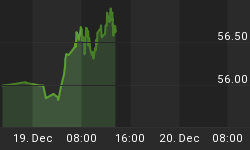The "dumb money" is bearish and the "smart money" is bullish, and over the past 17 years, this confluence of indicators has generally marked an intermediate term stock market bottom.
The "dumb money" indicator looks for extremes in the data from 4 different groups of investors who historically have been wrong on the market: 1) Investor Intelligence; 2) Market Vane; 3) American Association of Individual Investors; and 4) the put call ratio.
The "smart money" refers to those investors and traders who make their living in the markets. Supposedly they are in the know, and we should follow their every move. The "smart money" indicator is a composite of the following data: 1) public to specialist short ratio; 2) specialist short to total short ratio; 3) SP100 option traders.
So we now have the "dumb money" bearish and the "smart money" bullish, and figures 1 through 3 show when these have occurred together over the past 17 years. These are identified by the red dots. Figure 1 covers the period from July, 2002 to the present. Figure 2 covers from April, 1997 to September, 2001. Figure 3 covers from December, 1991 to July, 1996.
Figure 1. July, 2002 to the present
Figure 2. April, 1997 to September, 2001
Figure 3. December, 1991 to July, 1996
Prior to the current signal, there have been 18 signals in the past. All but two led to sustainable price moves; those failures are identified by gray ovals on the graphs. The October, 2000 failure is my most worrisome as this led to increased selling and continuation of the 2000-2002 bear market.
Nonetheless, it is data like this (16 out of 18 signals yield positive results) that suggests to me that the correct side to play is the bullish one.
To learn more about our quantitative and disciplined investment approach please visit www.thetechnicaltake.com and sign up for our free weekly newsletter and downloads.















